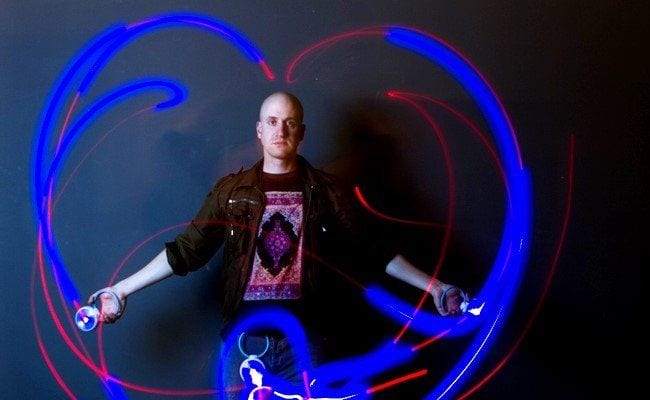Not a lot of people know of the Marches, but the select people that know of Richard Conti’s found-instrument experiment know that as he compiles his songs one single take at a time, he eventually turns simple, funky melodies into something that sounds both old-school and modern at the same time, his albums walking a fine line between the familiar and the new, creating for a visceral, exciting listening experience.
Indeed, the Marches’ 2008 full-length, 4.a.m. Is the New Midnight and the covers-driven Director of Photography EP in 2010 helped establish Conti as a reliable savant of styles both old and new, his hammering horn-attack cover of Adele’s “Cold Shoulder” bringing actual adrenaline to the original while original works like the too-funky “Bad Touch” could very well have been masterminded by the kind folks at Daptone Records. (Full disclosure: The Marches even contributed a song to this writer’s own free compilation album Good With Words, adapting a cover song which then lead off the Director of Photography EP.)
Yet after some six years since the Marches last release, intervened by Conti adding a variety of instruments to albums like Historian’s 2015 effort Current, Conti is back and in fine form, with the long-awaited sophomore album from his brainchild, I Shall Stand Like David Until Death Makes Me Marble. To celebrate the occasion, we have the premiere of the group’s brand-new video “Living Language is Killing”:
When asked about the song, Conti tells PopMatters that “There is so much musically going on with [it]. It has some of the most crazy and innovative sax solos I have ever put to recording. And they encompass a history of genres. One jets away with a fast tempo almost straight-ahead style. A later melodic solo channels an ’80s vibe. Finally there are a couple others I put through crazy pedal effects; people ask what the instrument is, if it is even some sort of weird synth but it is all sax. I have never heard that done with sax before so it might be nice if it pushed some sort of boundary. I reversed a full horn section at one point too which takes a cue from Souxsie and the Banshees’ ‘Peek-A-Boo’.
“Lyrically I am very proud of it as well,” he continues. “It deals with people I know in LA and elsewhere that are so creatively unique, with such great ability; I would like to see them all successful. But that finish line of achievement remains presently elusive. Lines like ‘so less than what we are’ refer to that. ‘Gallows complexion’ is a Shakespeare quote.
As for the music video itself, Conti notes that “The video itself started out with me trying to be lazy. I thought, ‘I know a lot of creative people in LA that have taken time-lapse photography of the city, or interesting video of the city, or something to that effect on camera. I can just ask all of them for footage, assemble it together and make an homage to the city and the people in it.’ Which I did. Then I realized, ‘Oh, I need the actual people that made the music in the video too.’
“So I worked with Justine Fillingham to shoot the band. My friend Mayburn has a mural by the artist Septerhed in his backyard and I always wanted to shoot in front of there. When meeting with Justine and her husband Brendan (whose vocal harmonies can be heard in the song) the idea came up to have a static shot against the mural, with each instrument separated so we can punch in and out images of everybody at different times or all at the same time. It was a fun effect. Then I took all this footage and started editing it all together. It took months. I think it looks striking with all the slomo, live shots, moon timelapse, Los Angeles captures, punching in and out, etc. I’m glad it’s finally done! I am very glad and thankful to Amy Darling whose great shots of the city added depth to the video and Brian Knudson whose time-lapse photography was so moody and interesting.”


![Call for Papers: All Things Reconsidered [MUSIC] May-August 2024](https://www.popmatters.com/wp-content/uploads/2024/04/all-things-reconsidered-call-music-may-2024-720x380.jpg)



